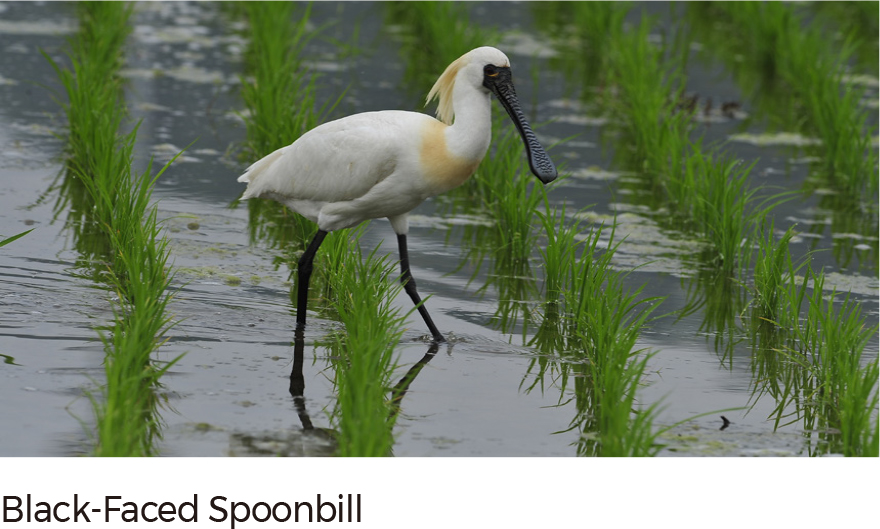Comprehensive Edition 2022
Many migratory birds visit and use the Korean Peninsula as wintering, breeding, and stopover sites. In particular, shorebirds that spend the winter in Australia and New Zealand and migrate to Siberia for breeding usually visit Korea to feed in the tidal flats of the west coast in spring and autumn.
Among the nine flyways used by migratory birds worldwide for breeding and wintering, Korea is included in the East Asian-Australasian Flyway (EAAF). Small birds of the order Passeriformes visit the southwestern coastal islands of Korea while traveling between wintering areas in southern China and Southeast Asia and breeding grounds in Korea, Mongolia, China, and Russia in spring and autumn. According to the Bird Research Center of the Korea National Park Service, more than 370 species have been confirmed to pass through this flyway periodically in spring and autumn. Islands are also critical stopover points for these small migratory birds.
Globally, cranes include four genera and 15 species. In Korea, Red-crowned Crane, White-naped Crane, and Hooded Crane are commonly observed in wetlands or grasslands. The wintering season in South Korea spans from October to March, during which time flocks migrate southward from their summer habitat. Cranes display diurnal behaviors, differentiating sleeping grounds and feeding territories in their wintering areas in South Korea, and mostly feed on plant bulbs, fallen grains, and invertebrates in cultivated fields. The Hooded Crane inhabits South Korea only temporarily as a migratory stopover; however, the population of Hooded Cranes has been increasing recently. Of the cranes in South Korea, the Red-crowned Crane and Siberian Crane are globally endangered species.
Of the 36 species of spoonbills in the world, five inhabit Korea. They live in shallow wetlands, such as tidal flats, rice paddies, and estuaries, and eat small fish, shrimp, amphibians, aquatic insects, and worms. Black-faced Spoonbills breed mainly on uninhabited islands at the border between South Korea and North Korea. They also breed on the west coast of the Korean Peninsula and an artificial island within the Namdong reservoir of Incheon. In 1994, Black-faced Spoonbill were in danger of extinction as only about 300 survived in the world. Since then, the population has steadily increased due to global protection efforts, and it is now more than 4,000. Black-faced Spoonbill are summer migratory birds, but less than 40 of them spend the winter in Jejudo.
Crested Ibis, also belonging to the Spoonbill family, arrived in Korea as a winter migratory bird in the past. It is believed that Crested Ibis breed in the northern part of the Korean Peninsula. After 1978, no wild Crested Ibis had been reported in Korea. Therefore, beginning in 2008, a restoration project was started in the Upo wetlands in Changnyeong-gun, Gyeongsangnam-do. A total of 401 Crested Ibises were artificially propagated from four introduced Crested Ibises. Since 2019, 40 of them have been released into the wild.
|














